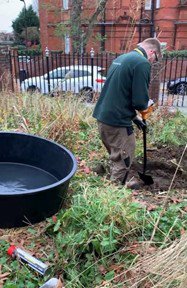
How organisations can improve lone worker safety
Every day, lone workers face lots of different health and safety risks and hazards.

Lone Workers
Every day, lone workers face lots of different health and safety risks and hazards. Lone working refers to any activity that someone is performing for extended periods without direct or close supervision, in the absence of colleagues nearby or within earshot. Lone working does not necessarily mean the worker is physically alone; it means they are in a separate location from the rest of their team or manager.
Figures from the Office for National Statistics (ONS) in 2019 showed that up to 25% of the UK workforce had lone working responsibilities. As of January 2023, the number of people 16+ in employment was 32.81million meaning that around 7-9million workers in the UK lone work.
Organisations have a duty to protect lone workers in their teams as much as possible. Employers should uphold lone working procedures including risk assessments and also check in with lone workers regularly.

There are many ways that companies can improve lone worker safety, firstly by identifying lone workers and common hazards.
The wide scope of a lone worker classification means that companies may not be automatically aware of who is lone working and who is not.
For instance, staff working from home may also be classed as lone workers and an employer would have the same responsibility to provide support in an emergency as if they were in the office. Vice versa, someone working from the office or a construction site by themselves, or not within ear shot of another employee, would also be classed as a lone worker. Therefore, identifying who could potentially be a lone worker is an important step in keeping them safe.
Once lone workers have been identified, categorise all the potential hazards that are present in their various environments. For example, a structural surveyor could be at risk of slips, trips and falls or even having their equipment stolen if it is not adequately secured. In addition, another risk may be a vehicle accident if they are commuting from job to job.
The most common workplace hazards are ones that could cause harm to people, property or equipment and should be flagged as risks. Every workplace contains hazards with varying degrees of risk. Where office workers may be more at risk of a Display Screen Equipment (DSE) injury, a worker on site would be more at risk from falling from height.
Identifying as many hazards as possible allows a company to lay the foundations for proactive emergency response and serious injury prevention. Taking strong action against risks should be the first responsibility in protecting lone workers.
Lone Worker Risk Assessments
A lone working risk assessment is also crucial for improving lone worker safety. As a guide, a lone working risk assessment could include:
◼ Equipment that the lone workers need to use
◼ Working in confined spaces
◼ Working in remote areas
◼ Exposure to wiring, chemicals or hot surfaces
◼ Slips, Trips and Falls
◼ Working at Height
◼ Stress, anxiety and burnout
◼ Unprovoked violence or harassment
◼ Tiredness and fatigue
◼ Medical Emergencies
◼ Working unsociable hours

Finally
It is also vital that lone workers always have a named contact they can call in the event of an emergency and also have a fully charged mobile phone with them at all times.
Creating a detailed lone working policy is also vital for ensuring a lone workers wellbeing. This document can be used to establish specific company rules around lone working.
Each company's lone working policy will be slightly different, but should include as a baseline:
◼ Individual lone working and line manager responsibilities
◼ Identification of who is responsible for implementing measures
◼ How to report hazards or incidents
◼ Step by step instructions to follow in case of an emergency
◼ General safety guidance and control measures.
It is important that all lone workers know their limits and take a degree of responsibility to maximise their own personal safety, as well as that of others.
Thanks to MSM Safety for support with this article


